Ömie women of Huvaimo (south-eastern Mount Lamington) in Oro Province, Papua New Guinea, create painted and appliquéd barkcloth. Barkcloth is of great social importance to the Ömie and is primarily used as clothing, for brideprice gifts, offerings to the Ancestors, and for ceremonial festivities. Women’s barkcloth skirts, as well as blankets, are called nioge, while men’s loincloths are called givai.
Women prepare the barkcloth by harvesting the inner layer of bark (the bast, or phloem) of rainforest trees, particularly the species, Paper Mulberry (Broussonetia papyrifera) and Dye Fig (Ficus tinctoria). The bast is rinsed and folded before being pounded repetitiously on flat stones using black palm mallets until a strong, fibrous sheet of cloth is produced. Traditionally a stone mallet was used. The cloth is then left to dry in the sun. Natural pigments are used to paint the designs onto the barkcloth. Black pigment is created from womé (tree sap) or charcoal. Red pigment is created from ferns, yellow from the flesh of the aré fruit, and green from flowering shrubs. Common painting implements include strong grasses, fashioned wooden sticks and brushes made from frayed betelnut husks. Appliquéd barkcloths known as sihoti’e taliobame’e are sewn using bat-wing bone needles. The rich grey colour of the barkcloth found in appliquéd barkcloths is achieved by dyeing the cloth in volcanic clay deposits.
Predominantly, an organic geometric symbolism is used to adorn their barkcloth. These motifs have ancient origins and often relate to their sacred Creation story, ancestral cultural knowledge, social customs, tribal laws, and the environment (landscape, native wildlife and plants, and elemental forces of nature). Ujawé (initiation) tattoo designs are also painted onto the barkcloth. Designs vary depending on clan and sub-clan affiliations.
Artists inherit clan designs as young women by birthright or marriage from their mothers, grandmothers and mother-in-laws, and in some instances from their fathers and husbands. Elderly artists who have attained a level of mastery, usually Duvahe (Chiefs), are free to paint their uehorëro (wisdom), creating new designs. The Ömie’s female Chief system is primarily based upon a woman’s barkcloth painting talents and the cultural knowledge she attains over a lifetime.
A characteristic commonly seen in most Ömie barkcloth is the use of orissegé (pathways) — which function as borders and frames for the main designs but can sometimes become the most prominent part of the design itself. Stylistic similarities are shared with neighbouring tribes such as the Orokaivan, Managalasi and Massim.
Ömie barkcloth has been produced through the artist cooperative Ömie Artists for the international fine art market since 2003. Approximately forty Ömie artists produce barkcloth today (as at 2016). The master painters of Ömie barkcloth are: Filma Rumuno (c.1927-2006), Sarah Ugibari (c.1919-), Fate Savari (c.1933-), Albert Sirimi (c.1935-2012), Brenda Kesi (c.1937-), Lila Warrimou (c.1944-), Botha Kimmikimmi (c.1941-), Dapeni Jonevari (c.1949-), Celestine Warina (c.1947-), Mala Nari (c.1958-2015), Aspasia Gadai (c.1963-2013). Leading artists of the younger generation include: Pauline-Rose Hago (1968-), Lillias Bujava (1977-), Jessie Bujava (1970-), Diona Jonevari (1979-), Ilma Savari (1968-) and Pennyrose Sosa (1976-). Ömie barkcloth art is held in significant public collections by the National Gallery of Victoria; National Gallery of Australia; Queensland Art Gallery; Museum of Archaeology and Anthropology, University of Cambridge; and Museum Fünf Kontinente. Ömie Artists are represented commercially by galleries in Australia, Europe and the USA.
Further information: www.omieartists.com


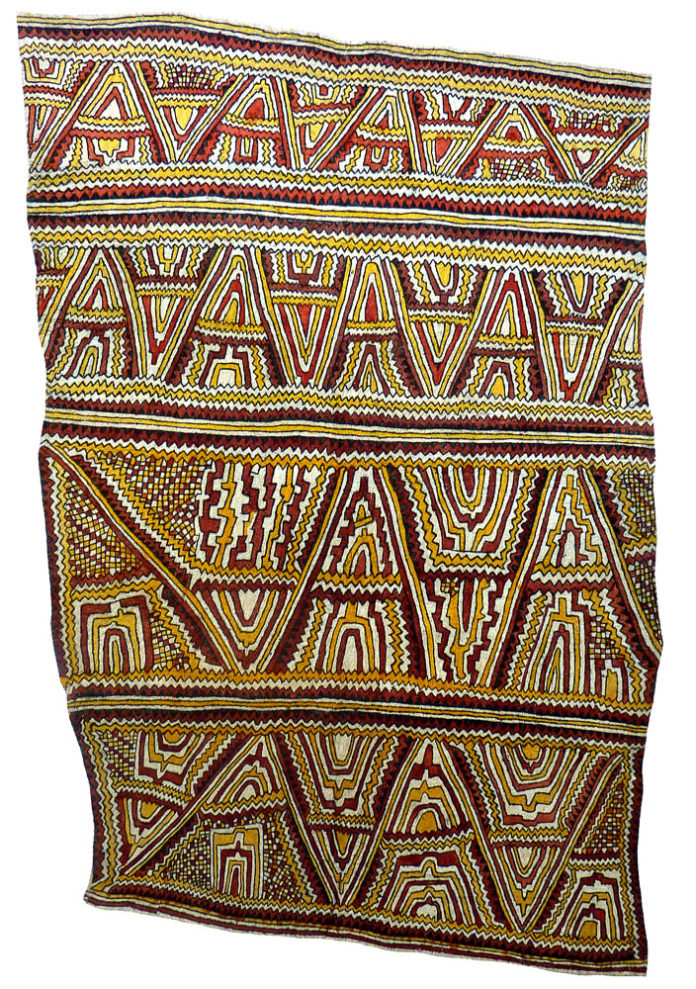
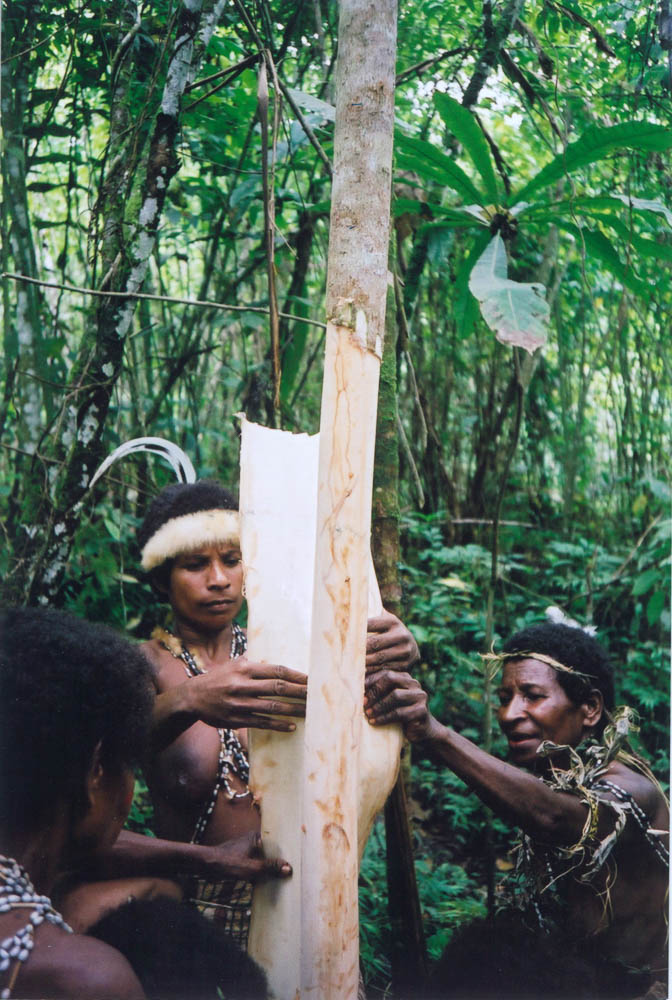
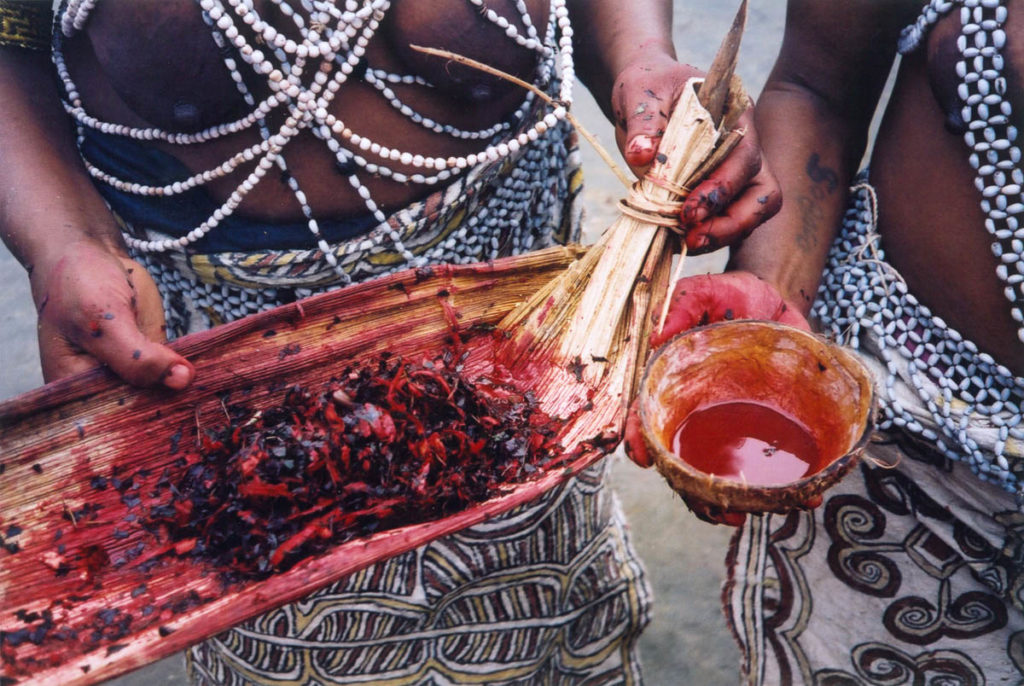
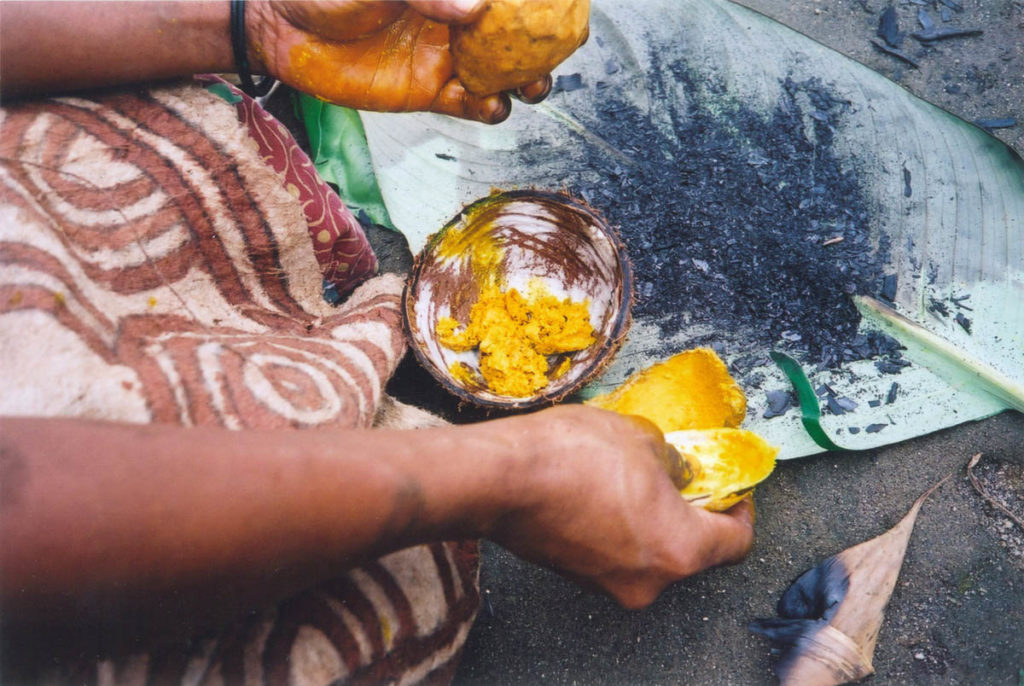
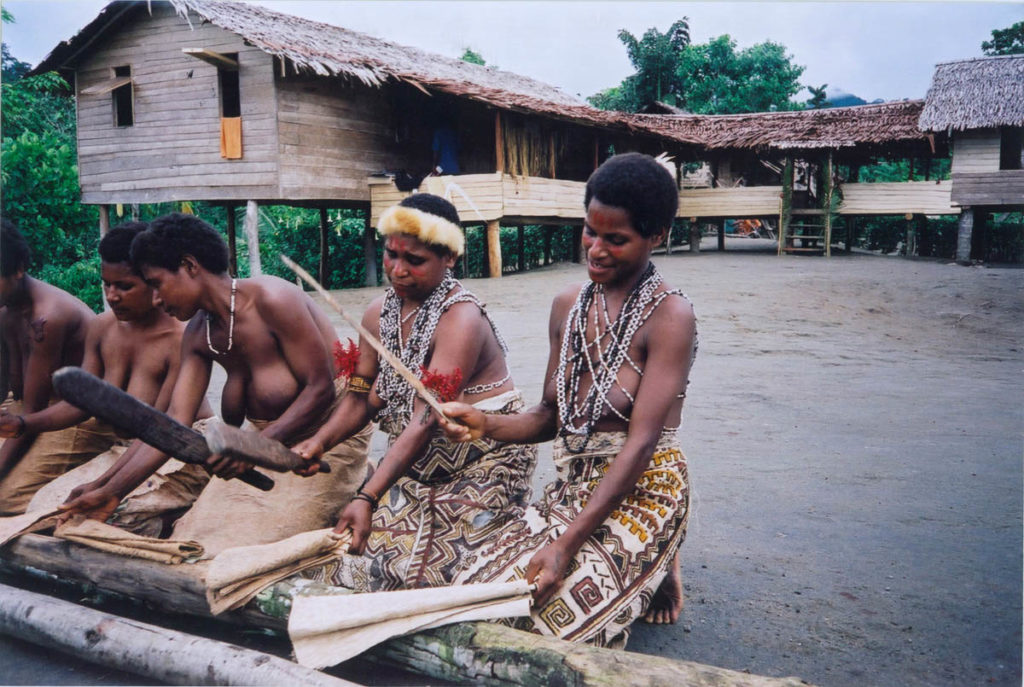
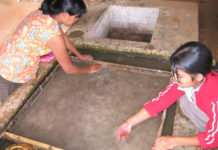


Greetings from New Zealand. Is there a traditional name for the PNG barkcloth beaters? I have had the pleasure of viewing a stone beater from Papua New Guinea,
which is the only stone beater I have seen. I have an interest in Pacific barkcloth and have researched Fijian masi and utilise this barkcloth in my art as a canvas.
I look forward to hearing from you and hopefully, you can answer my question.
Thank you 🙂
Filani